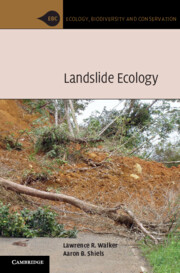6 - Living with landslides
Published online by Cambridge University Press: 05 January 2013
Summary
Key points
Human interactions with landslides have become more frequent and lethal as our populations expand into less stable terrain. This trend suggests that we must better understand what causes landslides and how to mitigate future damage.
Disturbances created by road construction, urban expansion, forestry, and agriculture are major contributors to anthropogenic landslides, and each has increased in frequency during the last several decades.
The field of landslide risk assessment is growing rapidly, and many new mapping and modeling tools are addressing how to predict landslide frequency and severity. Mitigation of landslide damage is also improving, particularly when new landslides follow patterns similar to previous ones. Despite a broad understanding of landslide triggers and consequences, detailed predictions of specific events remain elusive, due to the stochastic nature of each landslide's timing, pathway, and severity.
Biological tools are valuable additions to efforts to mitigate landslide damage. Biological protection of soil on slopes and restoration of species composition, food webs, and ecosystem processes ultimately must supplement technological approaches to achieve long-term slope stability because biological systems are generally more resilient than man-made structures.
- Type
- Chapter
- Information
- Landslide Ecology , pp. 181 - 226Publisher: Cambridge University PressPrint publication year: 2012

